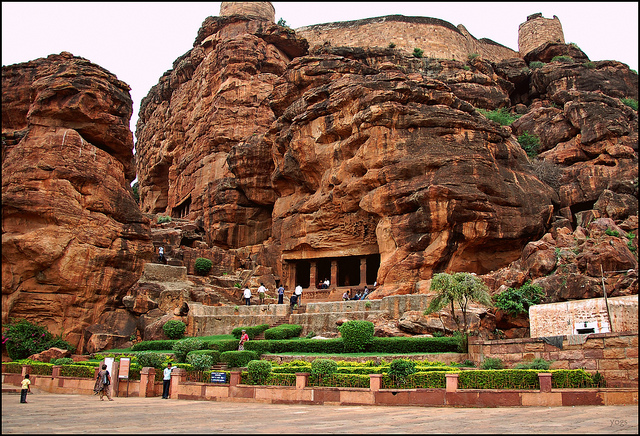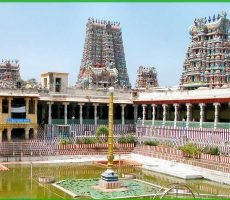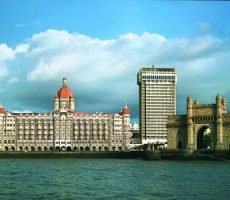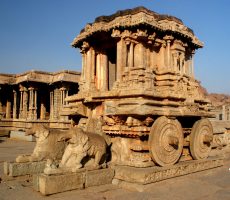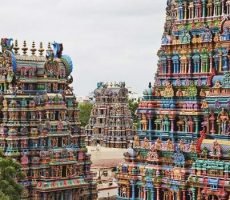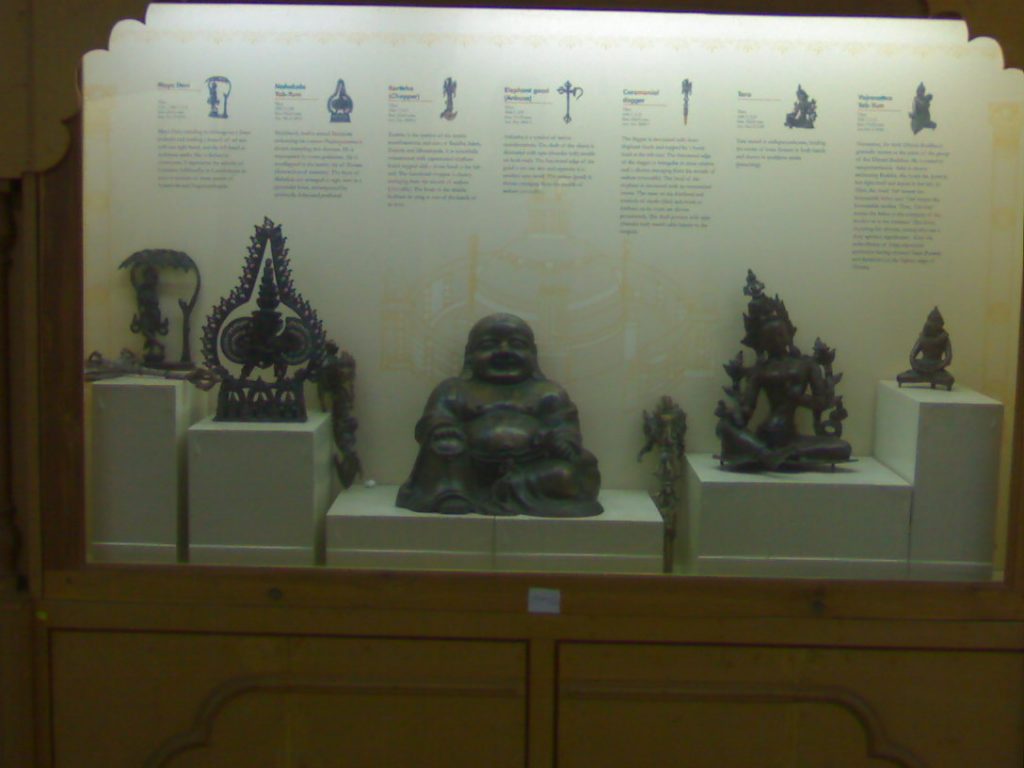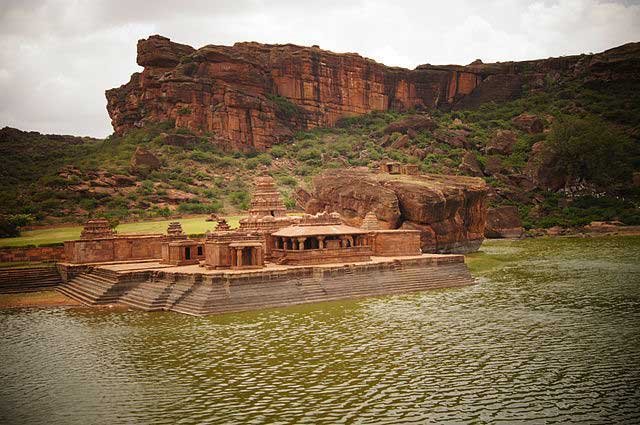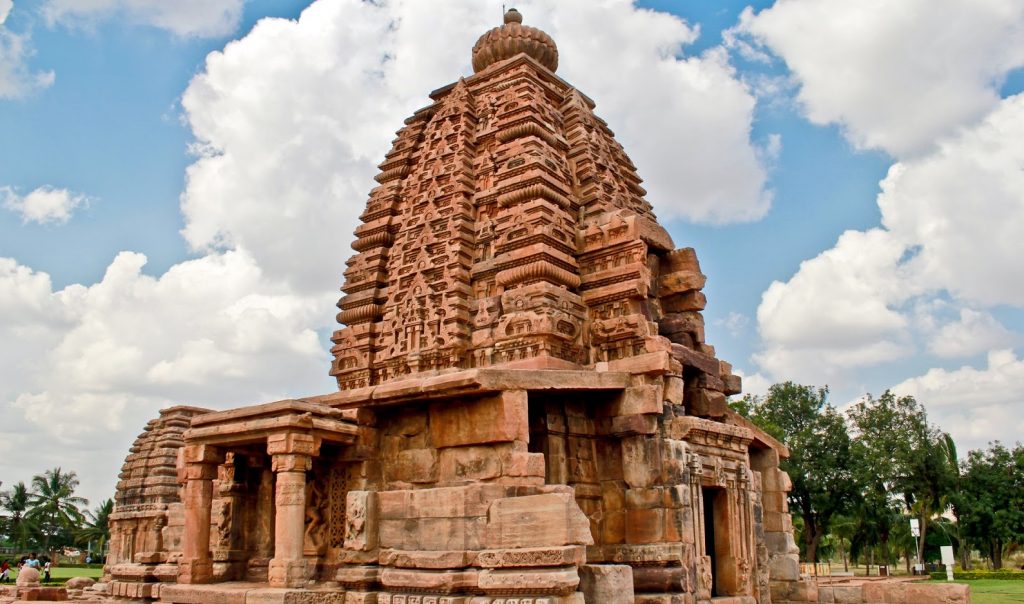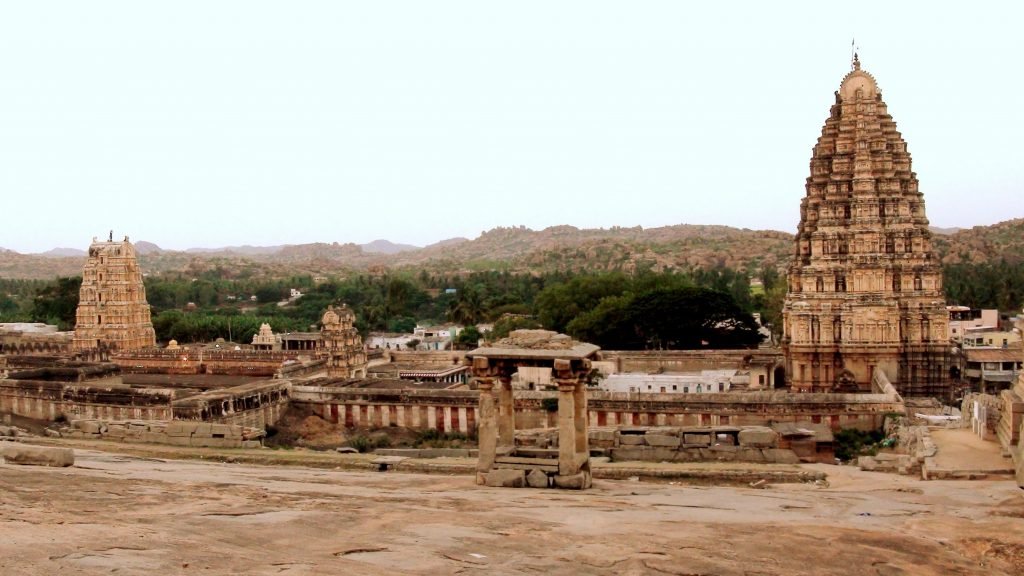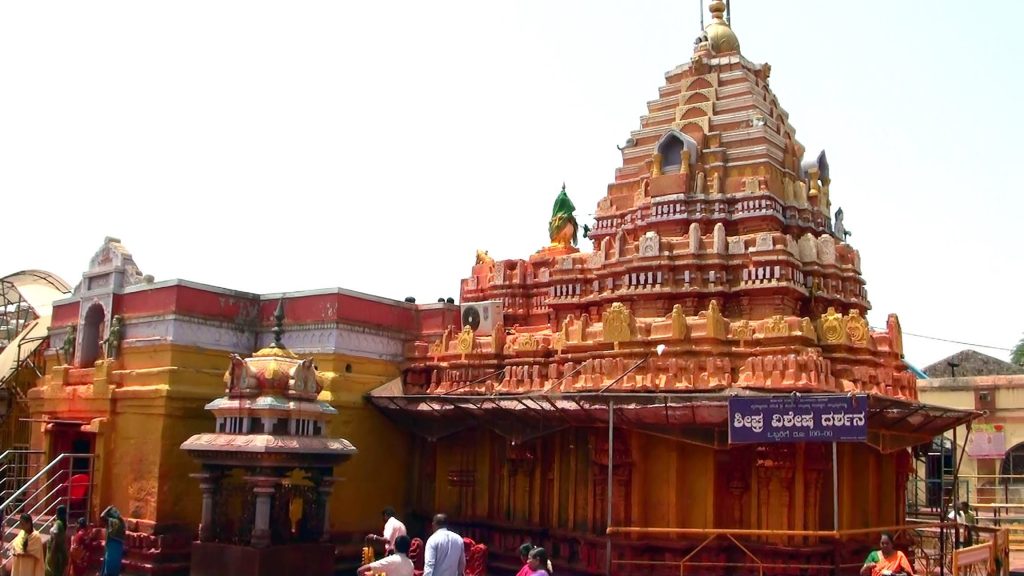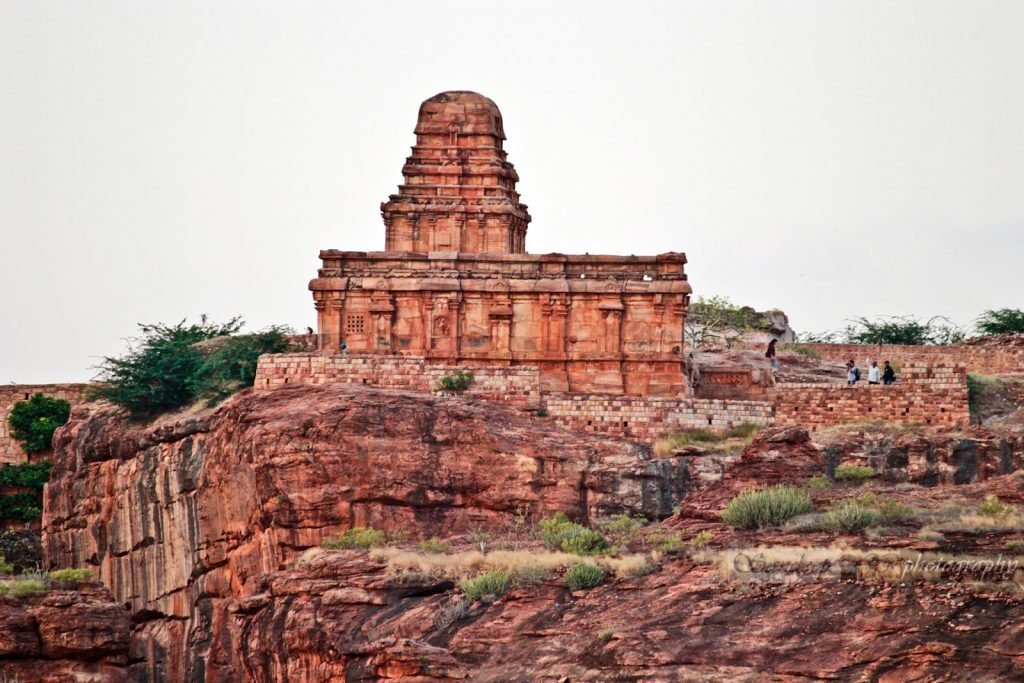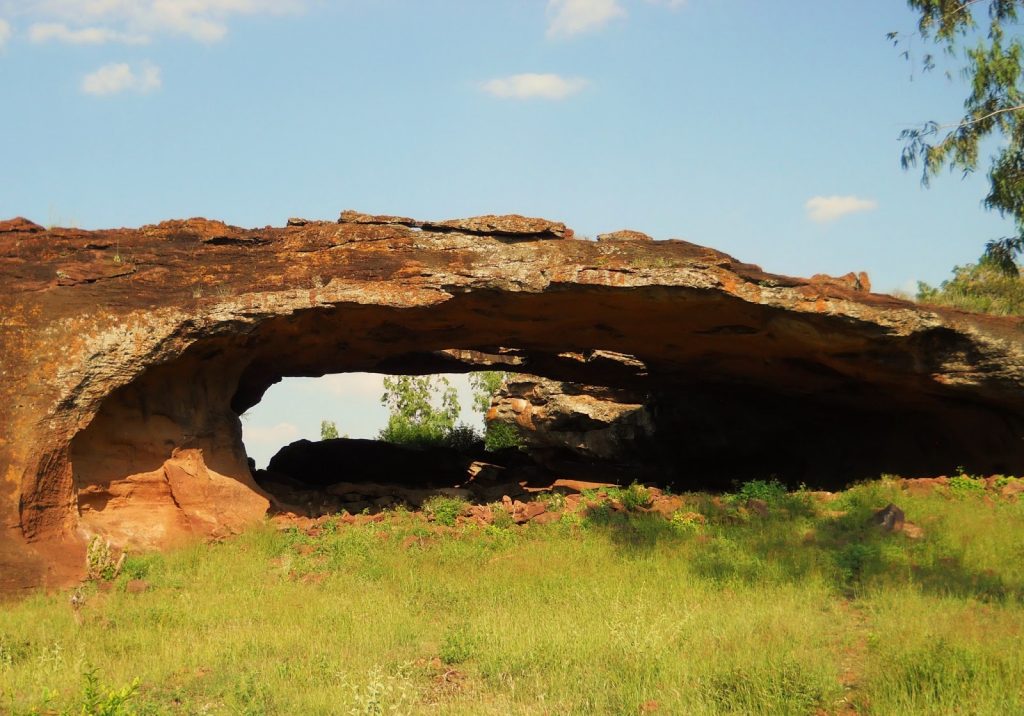Badami Caves Karnataka : Temple, Things to See, Food, Shopping, Hotels
The Pallavas, Chalukyas and Rashtrakutas fought over this ancient territory. Tipu Sultan also stepped foot here in the eighteenth century. Badami was traditionally known as Vatapi. Presently, the temples showcase marvelous architecture with most of the forts made from sandstone.
There are nearly one hundred temples in Aihole that date back to 6th – 12th centuries CE while some of them look unfinished. Shikhara or Mountain Peak is a temple that stands out for its towering height and brilliant style here.
The town of Badami joins onto the State Highway with a taxi stand nearby. Narrow lanes, tiny villages, old houses and shops are visible before entering the temple grounds.
Things to See in Badami:
#1. The Caves
The caves are the most magnificent sights of Badami. The shrines here are cut into the rock itself. The 1st Cave dates back to the sixth century and is for Shiva. Inside you can see Nataraja sculpted to perfection. The Dancing Shiva life sized sculpture displays 81 poses from the dance for Bharatnatyam. There is a hall with pillars, a verandah, as well as a sanctum here. You need to get a ticket to start off the Badami trip.
On the wall in front visitors can see Parvati adorned in jewels as Shiva and Third Eye. Harihara (Half Shiva /Half Vishnu) is sculpted into the pillars of the hall while mythological figures are engraved into the ceilings. There are entry fees, video, still camera fees and timings too.
Climb steps that are rock -hewn to go 2nd Cave. This cave is smaller in size and is for Vishnu while Jay and Vijay, his dwarapalas welcome the visitor inside. You can see ten incarnations of Vishnu in a Dashavatara. There is some Greek influence as there are figures with unique curly hair inside.
There is an extensive gateway to enter 3rd Cave, the largest cave dedicated to Vishnu. See colored sculptures unlike other caves and divine beings carved intricately on pillars. The extreme left wall has inscriptions in Sanskrit about the temple plan while the right wall bears Vishnu in the Boar disguise saving Bhudevi. There are also sculptures of Narasimha and Vishnu seated on the reptile.
Must Read: Best Luxury Boutique Hotels in Goa for a Memorable Stay
The 4th Cave dates back to the 7th Century and is the smallest of the caves which is dedicated to the first Jain Tirthankara, Adinath.
A rock bears the Padmapani sculpture that lies between the 1st and 2nd Cave. There is another stairway leading to South Fort which is presently closed as visitors in the past jumped from there.
The Agastyatirtha Tank alongside Yellamma and Bhutanatha temples are visible from the 3rd Cave and 4th Cave Patios. The upper and lower Shivalayas are visible on the mountain that lies opposite. There is a Buddhist Temple ruins amidst the ruins of an eighteenth Century Fort built by Tipu Sultan. Get a view of the Malegitti Shivalaya on the borders.
Suggested Tour Packages
#2. The Archaeological Museum
There is an ornamental torana that houses the most beautifully and rare panels of the Life of Krishna and Tripurantaka Shiva. The panels are also sculpted with various roles from the Bhagvad Gita, Ramayana and Mahabharata.
#3. Bhuthanatha Temples
The Bhuthanatha Temples lines the Agastyatirtha which reflects sunrays and giving out a golden glow as you can listen to the sound of the birds singing. The north eastward temple extends into the water tank. However you can only reach by going past the northward temple. In these two temples that date back to sometime between seventh and eleventh century Paanch Bhutas (Shiva) is celebrated.
One sports a sloped roof with Shikhara in Kadamba Nagara style like early Chalukya design. You can see massive rocks engraved with prehistoric carvings. Parsvanatha statue is present hidden behind a rock hanging over in the ancient Jain Cave. There are entry fees with specific timings.
#4. Jambulinga Temple
Jambulinga temple that dates back to the seventh century is one among the first three celled sanctums or Trikutachala Garbhagriha temples in the state of Karnataka. On the ceiling one can see the curvature of the scene of Shiva and Parvati riding Nandi. Due to these exquisite depictions of ancient scenes this is one of the most visited temples. However whitewash has concealed some of the details on walls and pillars.
#5. Virupaksha Temple
The Virupaksha Temple is a small temple that dates back to the eighth century and stands in front Jambulinga temple. However visitors have to enter in after going around the houses to the whitewashed temple. There are specific timings but the best time to visit is early evening.
Read More: 10 Most Popular Waterfalls in Karnataka, You Must Visit!
#6. Yellamma Temple
This temple is dedicated to Yellamma or the incarnation of Parvati. Dating back to the 11th century the Dravidian styled shrine was originally a Vishnu temple. There are steep steps on all four sides. There are specific entry fees and timings.
#7. Upper & Lower Shivalayas
Behind the Archaeological Museum are the two Shivalayas located inside the fort. There is a cleft in the hills with sandstone to get to the Fort. Several of the walls that were built to cover the inlaying valleys in the Tipu Sultan rule were dismantled during 1845. There are tiny carvings and sculpted panels on the hill while there are massive stones on either side of the passage leading up to the fort. The first storey ruins provide a view of the entire town. The Malegitti Shivalaya is easily seen from here.
In the Lower Shivalaya which is dedicated to Ganesh there is a 16th century cannon to the north of the temple. The storeroom for ammunition is located underneath the stairway that leads up to the watchtower. There are arms for the soldiers there and it also has a trapdoor.
Below the stairs, leading to the tower, is a storeroom for ammunition. It has a trapdoor to hand arms to soldiers in the watchtower. There are storehouses resembling tiny pyramids on the way to the fort that is presently being restored. There are specific timings.
#8. Sidlaphadi Caves
This cave dates back to prehistoric times but is carefully recreated with images like the Lajja Gauri symbol. This is a spectacular must –see which is roughly 4 km from the main road. It is best to visit when the early morning sun’s rays enlighten the rock formations of the prehistoric Sidlaphadi Cave which is believed to have formed from a fierce bolt of lightning.
The journey takes roughly 3 hours so start early as it is like a hill hike. There are safety tips from tourist authorities and Badami Court Hotel not to venture out alone especially for women. There are specific fees for entrance and no cameras.
Related article: Hampi: A Brief Travel Guide
Accomodation in Badami:
Limited accommodation but some are mentioned here.
- The Badami Court: Ph: 08357-220230-32
- Mookambika Deluxe: Ph: 220067, 220997
- KSTDC Guesthouse, Hotel Mayura Chalukya: Ph: 220046
Cuisine of Badami:
Pattadakal and Aihole are without Hotels so visitors prefer staying in Badami.
- Badami’s Pulikeshi Restaurant: Open 24 Hours
- Mookambika’s Vatapi: Indian, Continental and Chinese Cuisine.
- Mookambika’s Kanchana Garden: Fried Avalakki consisting of uniquely prepared rice with fried groundnuts.
- Hotel Anand Deluxe & Sanman Bar
Shopping in Badami:
There are few but select items to shop for in Badami. There is a variety of dry fruits, fruits and sprouts to shop here. There are vibrant double weaved thick saris locally called Ilkalsari popularly known as Nawari saris in Ilkal which is close by.
Suggested article Top 5 Tourist Attractions in Badami
Also read – Best National Parks To Visit In Karnataka

